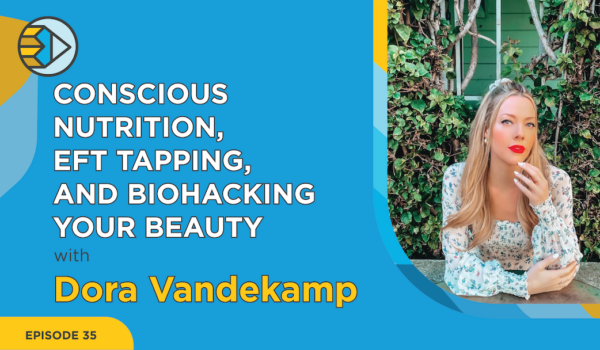
EP 45: Write a Resume in 6 Simple Steps
A resume is a snapshot of your professional life and career to date and depending on how many jobs and experiences you have had it can seem like a tedious process to incorporate them all into a few sheets of paper. Writing a resume does not have to be difficult. It can be easy if you break it down into a step-by-step process.
Today on the show we will give you a step-by-step break down to help you write an effective resume that will land you the job.
Looking for study tips, help with essay writing, or advice on how to be a better student? Welcome to The Homework Help Show, a weekly show where we teach, assist, and offer valuable insights for student life. From study hacks to writing tips, discussions about student mental health to step-by-step guides on academic writing and how to write a resume, we’ve got you covered. Want your questions answered? Write them below or join the conversation on social media using the hashtag #askHHG
TRANSCRIPT:
Cath Anne: [00:00:01] Hi guys and welcome back to our channel. My Cath Anne and this is episode 45 of the Homework Help Show hosted by Homework Help Global. Here on the show and provide you with valuable content for your academic and student life.
Cath Anne: [00:00:23] Creating a resume and see what the daunting process. When you think of all the work experience and professional jobs that you have had, it might seem overwhelming to condense this all into one or two short pages. However when you break it down into a variety of steps it does not have to be a difficult process.
Cath Anne: [00:00:46] Before beginning building you resume look for a template that you can use. I suggest using Microsoft Word. They have a variety of different professional looking templates. If you don’t see one there that appeals to, you can also search online. Pick a template and go from there. Use one that is both professional looking as well as uncluttered. You don’t want your resume to have too much clutter on it. And you also want it to reflect who you are as a professional, career oriented person. Remember, each resume should be tailored to the job you are applying for. Now today will discuss how to build a standard resume. However you can take that standard resume and tailor it to any job that you apply for in the future. Make sure when you do tailor your resume that you are looking at the job description that the employer provides and then you can use the language they have incorporated into the job description in your resume.
Cath Anne: [00:01:49] Step 1 collect all of your personal and employment information. Once all your information gathered it will be much easier to write your resume. Make a list of all the information you want to use including your jobs, start and date, credentials, education, and any skills that you want to incorporate on your resume. You also need your name and contact information like your phone number and your email, as well as any additional information that you think may be required on your resume. You may want to consider incorporating references on your resume as well.
Cath Anne: [00:02:26] Step 2 begin writing your resume. Once you have all of your information gathered, write your resume in the following order. Begin by writing your resume header. This will include your name, your contact information like your email and phone number, and it should be located at the top of your resume and centered. Second you will want to include an objective. This is not necessary in a professional resume however is something that may be of interest to you if you are looking to apply to a specific job. The objective gives the employer the opportunity to know what you are interested in applying for as well as the skills that you can bring to the job. It is one to two quick lines that will describe the hiring manager what you have to offer to the job. Then you want to list your experiences. Employers will want to know your job history: where you have worked, what position was, and how long you worked there. Make sure you include all of these details in your work history and your work experience section. List the jobs and internships you’ve had in reverse chronological order. You will want to go from the job you have had most recently to your latest job. For each position, include the job title, location of where you worked, how long you worked there and any accomplishments you achieved while you were there. You also want to include a bulleted list of responsibilities that could relate to the job you are applying for. When you are writing your list of responsibilities, use the present tense for jobs that you are currently working at and use the past tense when you are referring to jobs you have worked for in the past. Then you will want to discuss your volunteer work. If you have volunteer experiences that relates to the job, definitely include this on your resume. Or if you’ve done volunteer work in-between employment gaps that is also something important to include because it will speak to how to spent your time while you were between employment. Education usually comes next. You only need to describe the degrees and the institutions you attended, if you have been out of school for a few years. If you are a student coming out of school you may want to include your GPA, however this is not necessary. Again, education should be listed in reverse chronological order so if you have multiple degrees or multiple certificate programs list the one that you are currently in first and then go backwards from there. You will also want to detail any certifications you have and that will go to that section. Any things like first aid or other types of things that will apply to the job they are applying to. If you have any technological aspects that could be included in these credentials definitely make sure that you do include any gifts that you received your any credentials. Certifications is the next section of your resume and you will just want to describe any certifications or credentials that you have achieved. Then you may also want to consider awards and accomplishments. Don’t be shy to you know, boast yourself up a little bit, and talk about some awards that you’ve received. This demonstrates to a hiring manager that you have initiative and that you are willing to put forth the effort to achieve an award. You will also want to include a list of skills. This is usually written bullet form and a good way to go about writing this is to look at the job description and use some of the language that the hiring manager has posted in the job description in your bullet points. Make sure that all the skills that you are listing apply to the job that you’re applying for. Finally you may consider adding personal interests into your resume, however that is not something I personally add into my resume. Though, if you are applying for a tech job and lots of experience and interesting computers, this could be something that you could add to your personal interest section on your resume. It can be helpful to give the hiring manager a sense of who you are as a person and what your interests are and how they relate to potential job.
Cath Anne: [00:06:50] Step number three choose your layout. There are three different ways to lay out a resume and we will discuss them here. First is chronological. This is the most frequently used layout for a resume and presents your work history from most recent job to latest job. You can also use a functional resume layout. This usually comes in handy if you don’t have a consistent track record or work so you can focus on your experiences, volunteer experiences, and your skills that you have to offer. This is a more functional layout, and it doesn’t go in chronological order and in that way you are not saying to the potential hiring manager that you’ve missed a significant time frame in which you could have been employed. Finally you can use a combination method. This includes both the functional as well as the chronological work history.
Cath Anne: [00:07:50] Step number four: format your resume text. When you are writing your resume you will want to go back and make sure that it is legible and that it is easy for hiring manager to read. Use formats or fonts such as Calibri, Arial, Times New Roman, Verdana. These are all fonts that are really accessible and really easy to read. The exception to this is if you are applying to design-related position where you will want to showcase some of your skills around font design. In this case you can use a fancier font or perhaps something you design yourself. Consistency is important when you are writing your resume, so make sure you are using the same font throughout your resume as well as on your cover letter. One thing to note is that you can vary the font size, and whether it is bolded italics, using these types of changes to the resume would break up your resume. Feel free to use underlines or bold for headings and italics to emphasize certain parts of your resume. This is where a template could come in handy, because a template will already have the components built into it.
Cath Anne: [00:09:03] Step 5: Proofread and print the final version. You will definitely want to go through your resume again and again to make sure you have not made any typos. There’s nothing worse than having a resume that has a right take on it. You will most definitely not have a good opportunity to get the job if you’re posting something or giving something that is not professional. One idea is to get someone else to read it before you do give out the resumes they may have the opportunity to see something that maybe you have missed. It always helps to have a second pair of eyes. Print a copy of your resume and make sure that what is on your computer and lines up with how it should look on paper. Sometimes the formatting can be askew, and this is something you want to make sure is legitimate before you do hand it in to employers. Once you’re all set, print multiple copies of your resume and put them in a folder to hand out at a variety of interviews.
Cath Anne: [00:10:03] Step number 6: Write a resume for each job you apply for. As mentioned earlier, you will want to tailor your resume depending on which job you are applying for. Although you will always have a standard resume and it’s great to have that on hand, make sure you are using the language that is used in the job description in your resume. Because this will show that you are interested in specific job and will demonstrate that you do have the skills needed to apply to that specific job. When use the same language that the employer is using, they are more willing to relate to your resume because they will pick up on keywords that they themselves use. In this case it could mean them choosing you over another candidate.
Cath Anne: [00:10:51] Okay so that’s it for me this week. I hope this episode was of benefit. If you liked this video and found it helpful make sure to give it a thumbs up and subscribe to our channel so you don’t miss out on any of our other content. If you’re looking to connect with us on social media, check out the links in the description box below. Also if you do have any questions about how to write a resume, how to format a resume definitely jump into the comment box below, and we will see if we can help you out. Also check out our website, because this is something that can help you with. If you do need an extra set of eyes, hit us up at Homework Help Global and we would be glad to take a look over your resume and do a little bit of editing, or help format your resume and write it, too. All right guys good luck applying for those jobs and let us know if we can help. Have a great week and take care.
Share:

